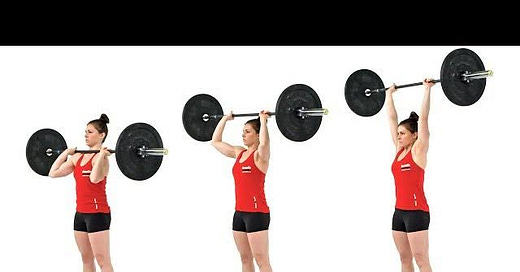Why the Barbell Overhead Press Outshines Pull-Ups for Building Strength
When it comes to building upper body strength, there’s often a debate between the benefits of compound barbell lifts versus bodyweight exercises. One such comparison is the barbell overhead press versus pull-ups. While both exercises have their merits, the barbell overhead press emerges as the better choice for beginners and even intermediate lifters. Here’s why:
1. Accessibility for Beginners
The biggest advantage of the barbell overhead press is its accessibility. Beginners can start with an empty bar or even lighter weights, ensuring proper form and steady progress from day one.
In contrast, pull-ups require you to lift your entire body weight. For context, the average person in the U.S. weighs about 91kg. That’s the equivalent of bench pressing 91kg for 3 sets of 5 reps—something most beginners would find impossible. Similarly, many can’t perform a single pull-up when starting out, let alone multiple sets.
This steep barrier can lead to frustration and demotivation. Starting with lighter weights on the barbell overhead press allows for positive reinforcement and builds confidence, which is crucial for consistency and long-term success.
2. Measurable Progress
Strength training thrives on measurable progress. With the barbell overhead press, you can add small increments of weight over time, celebrating wins along the way. This approach adheres to the principle of progressive overload—gradually increasing resistance to build strength and muscle.
Pull-ups, however, don’t offer the same flexibility. Progress is often slow and difficult to measure. Research has shown that even after six months of dedicated training, pull-up performance improves marginally:
Men: From 9 to 10 reps (1-rep increase).
Women: From 0 to 3 reps (3-rep increase).
Such slow progress can be discouraging, especially for those new to training.
3. Broad Upper Body Strength Development
The barbell overhead press targets multiple muscle groups, including:
Shoulders (deltoids): For overall shoulder size and strength.
Triceps: For lockout strength.
Upper chest and traps: For stability during the lift.
Pull-ups mainly target the lats, biceps, and rear delts, providing a more focused upper back workout. While effective for back development, pull-ups don’t address pressing strength, making the overhead press a more balanced upper-body builder.
4. Foundation for Future Pull-Ups
Barbell lifts like the overhead press and rows help lay the groundwork for mastering pull-ups in the future. Building strength with these exercises allows you to handle bodyweight movements more effectively as you progress. Pair this with gradual weight loss (if needed), and pull-ups will eventually become much easier.
5. Motivation Through Progression
Beginners need to see tangible improvements to stay motivated. The barbell overhead press ensures that every week, you’re moving closer to your goals, whether by adding weight or improving form.
Pull-ups, on the other hand, can feel like spinning your wheels—months of effort for minimal gains. This lack of visible progress can sap enthusiasm, whereas the barbell overhead press consistently delivers small, achievable milestones to keep you motivated.
6. Incorporation When Ready
Once you’ve built sufficient strength and confidence, there’s nothing stopping you from adding pull-ups to your routine. The strength developed from the overhead press will carry over, making pull-ups more manageable and rewarding.
While pull-ups are a valuable exercise, their steep entry point makes them less suitable for beginners. The barbell overhead press, on the other hand, is scalable, versatile, and promotes steady progress. For those looking to build a solid foundation of upper-body strength, the barbell overhead press is the clear winner.
Once you’ve gained the necessary strength, you’ll find pull-ups much easier to incorporate—and more enjoyable to perform. Start with what you can control and progress from there!





